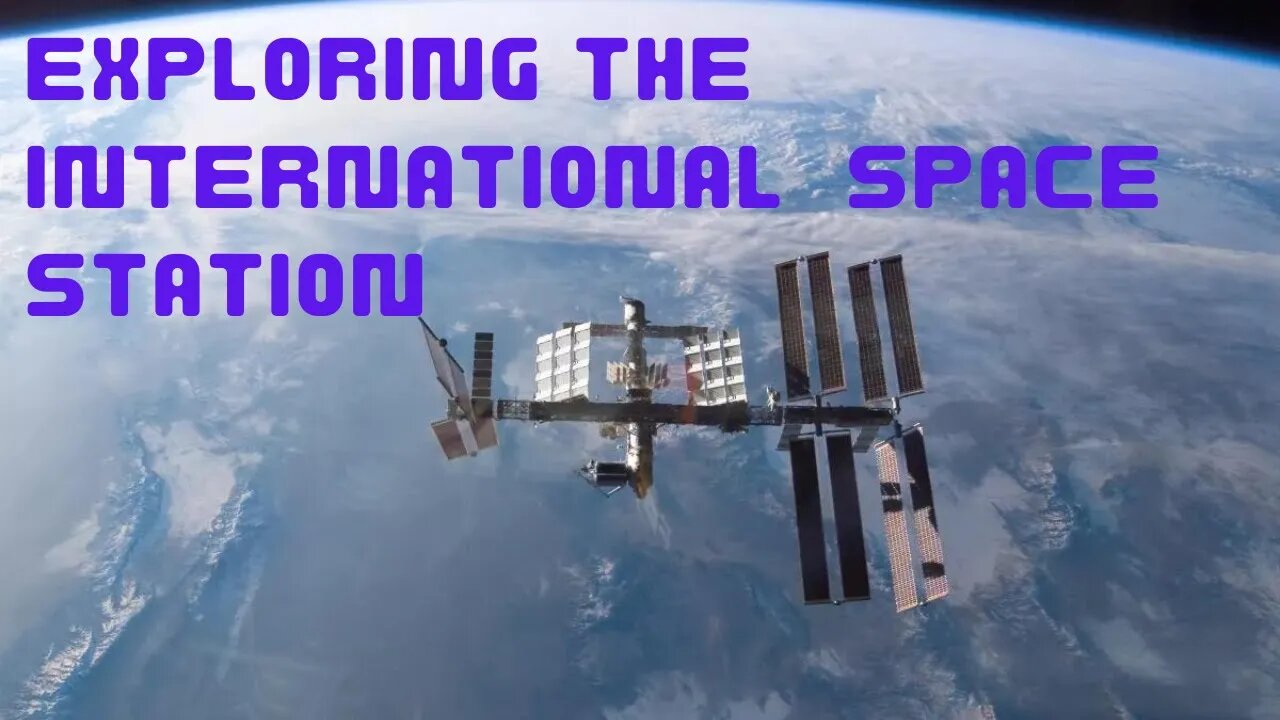Premium Only Content

How International Space Station Works? Exploring The International Space Station Full Documentary
The International Space Station (ISS) is the largest modular space station currently in low Earth orbit. It is a multinational collaborative project involving five participating space agencies: NASA (United States), Roscosmos (Russia), JAXA (Japan), ESA (Europe), and CSA (Canada). The ownership and use of the space station are established by intergovernmental treaties and agreements. The station serves as a microgravity and space environment research laboratory in which scientific research is conducted in astrobiology, astronomy, meteorology, physics, and other fields. The ISS is suited for testing the spacecraft systems and equipment required for possible future long-duration missions to the Moon and Mars.
The ISS program evolved from the Space Station Freedom, a 1984 American proposal to construct a permanently manned Earth-orbiting station, and the contemporaneous Soviet/Russian Mir-2 proposal from 1976 with similar aims. The ISS is the ninth space station to be inhabited by crews, following the Soviet and later Russian Salyut, Almaz, and Mir stations and the American Skylab. It is the largest artificial object in space and the largest satellite in low Earth orbit, regularly visible to the naked eye from Earth's surface. It maintains an orbit with an average altitude of 400 kilometers (250 mi) by means of reboost maneuvers using the engines of the Zvezda Service Module or visiting spacecraft. The ISS circles the Earth in roughly 93 minutes, completing 15.5 orbits per day.
The station is divided into two sections: the Russian Orbital Segment (ROS) is operated by Russia, while the United States Orbital Segment (USOS) is run by the United States as well as by the other states. The Russian segment includes six modules. The US segment includes ten modules, whose support services are distributed 76.6% for NASA, 12.8% for JAXA, 8.3% for ESA, and 2.3% for CSA.
-
 1:49:02
1:49:02
VIVA TV
3 days agoWhat Is The Most Shocking Sports Story Of The 2000's? (The Bracket, Vol. 161)
192K22 -
 3:07:41
3:07:41
TheNateVibez
16 hours ago#1 Streamer in Kentucky👀 - T-800 Road to Rank Domination✌ - ArmyVet🫡
124K2 -
 4:03:05
4:03:05
EXPBLESS
17 hours agoHAPPY FORTNITE SUB SUNDAY - SUB GOAL {8-50} #RUMBLEGAMING
102K2 -
 9:19
9:19
VSiNLive
1 day agoYou MUST Consider These 3-LEG PARLAYS for Super Bowl LIX!
133K6 -
 9:21:08
9:21:08
Scottish Viking Gaming
19 hours ago💚Rumble :|: Sunday Funday :|: If you can't Beat them...EAT THEM!!
115K4 -
 1:46:47
1:46:47
Game On!
1 day ago $15.75 earnedExpert Super Bowl LIX Picks, Preview, and Best Bets!
192K15 -
 36:50
36:50
Mrgunsngear
1 day ago $32.75 earnedPresident Trump's Executive Order To The ATF: This Could Be Huge!
156K87 -
 25:48
25:48
Adam Does Movies
1 day ago $4.73 earnedTop 10 Reasons Why Emilia Pérez Is Complete TRASH!
103K7 -
 26:56
26:56
MYLUNCHBREAK CHANNEL PAGE
1 day agoUnder The Necropolis - Pt 6
240K64 -
 6:03
6:03
Tactical Advisor
2 days agoEverything New From Panzer Arms 2025
61.1K3